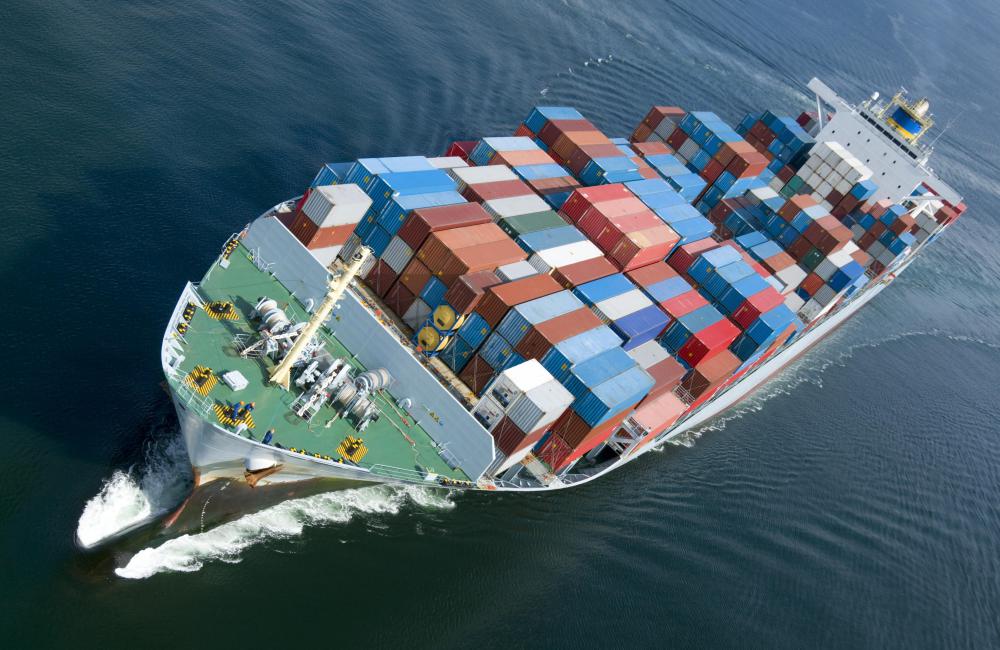At WiseGEEK, we're committed to delivering accurate, trustworthy information. Our expert-authored content is rigorously fact-checked and sourced from credible authorities. Discover how we uphold the highest standards in providing you with reliable knowledge.
What Should I Know About the Arctic Circle?
The Arctic Circle is a large region in the northern part of the world. It is currently defined as all area north of 66° 33’ 39” (66.56083°) latitude. This definition shifts slightly over time, as a result of the Earth’s tilt changing somewhat, shifting the lines of latitude by very small increments. The region within the Arctic Circle is referred to as the Arctic, and it contains land claimed by a number of different countries, specifically Canada, Finland, Greenland (Denmark), Iceland, Norway, Russia, Sweden, and the United States.
The Arctic Circle is determined based on the existence of the polar night and polar day. Within the Arctic Circle, at least once per year there is a full day in which the sun is visible at all times, and a full day in which the sun is never visible.

The temperatures within the Arctic Circle are incredibly low, and the land in the Arctic is inhospitable for humans. As a result, there are very few large population centers within the boundaries of the Arctic Circle. There are two cities in Russia that fall within the Arctic Circle and have more than 100,000 inhabitants, one that has just over 85,000, and one in Norway with just over 60,000 people.

Indigenous people, however, have lived in the Arctic Circle for thousands of years. These cultures often are based on a subsistence level existence, depending on seals, whales, and fish as sources of everything from food to clothing to fuel. In modern times indigenous groups have often clashed with Western governments over land use rights for mineral extraction, as well as limitations placed on their traditional lifestyles.

Historically land within the Arctic Circle has not been particularly desirable, and therefore countries have not laid extensive claim to it. Some whaling and seal-hunting has taken place in these far northern latitudes, but other than that there has been little reason for people to visit. In recent years, however, global warming has begun to free large expanses of ice, revealing previously blocked channels.

These newly forming channels open the possibility of major shipping lanes through the Arctic Circle, which could become one of the shortest routes between major trading nations like China and parts of Northern Europe. At the same time, recent oil exploration has demonstrated the potential for massive oil fields on the sea floor beneath the Arctic ice. While breaking through the ice would be cost prohibitive, if the ice recedes and this sea floor is exposed, the Arctic Circle could become a major source of oil in the next few decades.

The Arctic Circle has also historically been important militarily, particularly during the Cold War between the United States and the Soviet Union. Submarines are constantly patrolling the waters of the Arctic Circle, and a modern resurgence of military defense in the region has led to the construction of a number of ground bases to protect mineral extraction facilities, and to provide missile launching pads.
The future of the Arctic Circle is uncertain, with predictions of the consequences of global warming on the region ranging from fairly optimistic to outright apocalyptic. Models of climate change in the region, and of melting ice and the effect this will have on local flora such as seals and polar bears, are evolving rapidly. One thing becomes apparent as each month passes, however, and that is that the ecosystem of these far northern latitudes is incredibly fragile and tenuous, and may not survive much more drastic change.
AS FEATURED ON:
AS FEATURED ON:















Discuss this Article
Post your comments